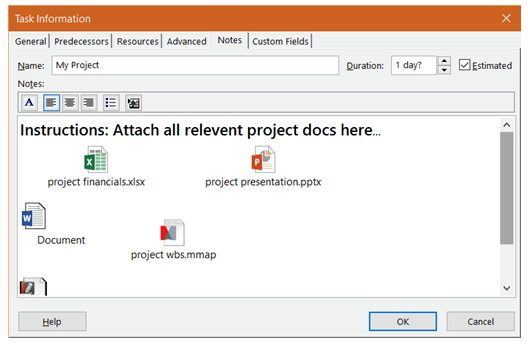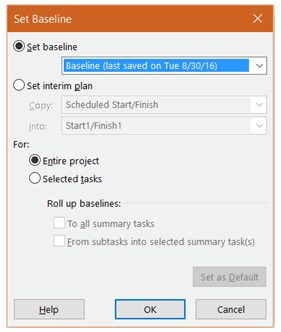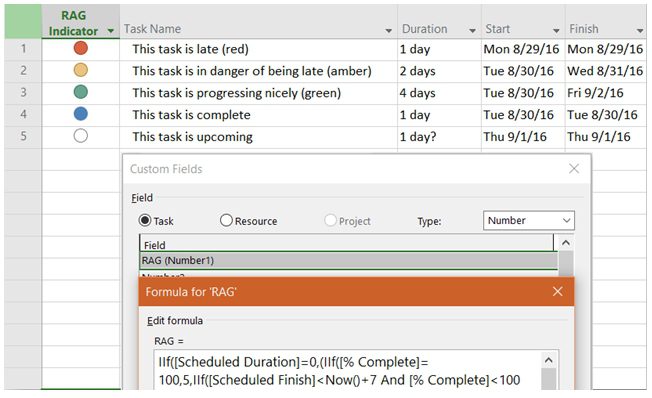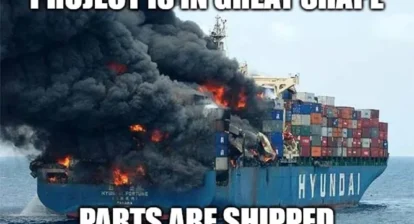 In Part 1 of this series, I introduced the notion that project managers can learn a lot from airline industry professionals and their great safety systems and also apply those principles to projects in trouble or that have already crashed and burned.
In Part 1 of this series, I introduced the notion that project managers can learn a lot from airline industry professionals and their great safety systems and also apply those principles to projects in trouble or that have already crashed and burned.
In this segment of “Mayday: Project Crash Investigation,” I continue with this airline industry metaphor. First, I offer ideas that will prevent you from making the same mistakes in your future projects, and then we go over how to get better at diagnosing projects currently in trouble.
First Step: Secure Your Data
When a project fails, it’s important to investigate the crash with the same rigor used by aviation experts when dealing with catastrophes within their industry. As I watched all 16 seasons of the TV series Mayday: Air Crash Investigation, the first thing I noticed was that crash investigators immediately secured the crash site, preserving all relevant data, wherever the clues were strewn. The second thing I noticed is that crash investigators always looked at the scene with an open mind and tried not to form any conclusions until a full investigation was conducted.
For example, there are numerous examples of jumbo jets crashing or otherwise failing to land safely during severe inclement weather, but after a thorough investigation for many, if was found that mechanical failures or pilot error was to blame, and not the storm that engulfed the craft. But these investigations would never have uncovered the cause if the crash site hadn’t been secured first to enable all details of the crash to be examined.
In that light, when your project fails, the first thing to do is to secure all data relating to the project: from its inception documents (concept notes, proposal, RFPs, EOIs, etc.) to the project’s implementation documents (budgets, workplans, schedules, risk management plans, etc.). In addition to this paper trail, what was said during the project — emails, chat logs, meeting minutes — should also be secured for the investigation.
These vital bits of data can be likened to the cockpit flight recorders — both the flight data recorder (FDR) and the cockpit voice recorder (CVR). For most of us, Microsoft Project makes a great FDR for our projects, recording all that happens during the life of the project — with snapshots in time (baselines) that show us how our projects perform (or not) over time. If we’re fortunate enough to be using Project Server or Project Online, we may also have the “soft” data found in comments and emails, essentially having a CVR as well.
Using Microsoft Project as Your Flight Recorder
Project is a well-known tool for creating and monitoring schedules, but another useful aspect of this tool is its built-in database capabilities. Using Task Information/Notes is a great way to have any ancillary data about your project attached directly to that project. In addition to plain text notes written at the task level, you can also attach associated Word, Excel, PDFs, or any other docs relevant to your project. I usually do that in the first task of the plan.
It’s a best practice to do just that: attaching any preliminary documents and working plans, such as risk management plans or monitoring and evaluation plans, directly to your project file, thereby making any later analysis of your project that much easier.
When using Project as a project database, it’s helpful to start this recording from Day 1, and not just use the project plan as an implementation schedule. In short, begin your project plan in Project from the moment you begin to conceptualize the work all the way to the point your project either flies out the door or skids off the runway.
Using Project’s baseline function is a great way to keep track of your project’s flight and is at the heart of recording what takes place (or not) during the life of the project. Up to 11 baselines can be set for any given project, and these baselines show the differences between what you planned to happen, and what actually happened.
A “RAG” indicator is another great tool to use within Project. RAG stands for red-amber-green, but it’s best understood as warning indicators on your project’s flight deck. Just as there are colored lights in any jumbo jet’s cockpit, you need these types of indicators inside your project plan. Project comes with a built-in status indicator, but that’s not good enough. In this case you have to add a custom column and field, and use the formula function to build something more useful.
Fortunately, that’s much easier to do than it sounds, and this tutorial will get you started. Once built and added to your project plan, you will always know at a glance what tasks are late, in trouble, completed or coming up — great for experienced project pilots as well as for beginning co-pilots!
Onto the Investigation
Now that your failed project’s “flight recorder” has been recovered, a proper investigation can begin with all the data on hand and in one place. The usual suspects are scrutinized one by one and, using the process of elimination, you can drill down to the root cause (or causes) of the failure.
As an excellent compilation on the International Project Power Skills Academy shares, project failures typically fall into 13 catastrophe categories:
| Catastrophe category | Catastrophe summary | Common indicators (warning bells & buzzers) | Possible mitigation or preventive measures |
|---|---|---|---|
| Goal and vision issues | Not understanding the "why" of the project or how the project fits into the organization as a whole | Private sponsor's agendas and lack of proper portfolio management | Use of a portfolio manager such as Microsoft Project Server |
| Power Skills and governance issues | Bad leadership and lack of good governance structures | Finger pointing and confusion when things take a turn for the worse | Power Skills training for PMs and good governance protocols |
| Stakeholder engagement issues | Stakeholders not identified or engaged | Vocal, angry stakeholders or radical departures from project course | Improved communication vehicles between internal staff and stakeholders |
| Team issues | Unresponsive or unproductive teams | Low morale and productivity, exhaustion and discontent among teams | Team-building exercises and training on technology -- overall better communication |
| Requirements issues | The scope of the project doesn't encompass the requirements needed for success | Radical requirement changes made midstream, project out of scope, lower than expected ROI | Better requirements analysis up front and better monitoring of mission creep |
| Estimation issues | Project is underfunded and under-resourced | Over-allocated resources and missed commitments | Better analysis of estimates based on valid scope of work |
| Planning issues | Project is off-schedule with little hope of return | Excessive schedule pressures, missed targets and weary team members | PM training, better priority planning, work culture analysis upfront |
| Risk management | No forward thinking or risk planning | Confusion, delays and surprise when things don't go as planned | Integrated risk management plan with proper analysis upfront |
| Architecture and design | Project isn't meeting goals but is being built anyway | Plan called for a Cessna, but a Boeing 747 is on the way | More attention paid to integration and fulfilling requirements |
| Configuration and information management | Project bits don't fit together and no one can figure out why | Confusion over where documents are; parts are incompatible with each other | Use Project as a database for documents and maintain better version controls |
| Quality issues | Poor project quality from beginning to end | QA test failures, lack of integrations and verifications over time | Proper monitoring and evaluation techniques employed |
| Project tracking and management issues | Delays and failures abound, while quality and productivity unexpectedly nosedive | All good news despite a bleak reality; tasks not fully completed without warning | Proper use of Project with RAG indicator and other monitoring tools in place |
| Decision-making problems | Situational awareness doesn't exist and tasks are left undone | Bad decisions and lots of unanswered questions, causing mass confusion | Team building exercises and leadership training with practice in proper design-making |
It’s important to note that during your investigation of a project crash, you may find more than one of the above catastrophes to be at the root of the project’s failure. Called the “cascade effect” in the airline biz, failures often start off small and build to a crescendo. Overall failure is often found to be the sum of many minor failures, and if one or more of the minor failures was caught in time, disaster might have been averted.
In Part 3 of this series, we’ll explore specific project disasters, outline what you can do to prevent future failures and also examine the idea of setting up a project safety board within your organization.
Read Part 1 of “Mayday! Project Crash Investigation,” here.
Read Part 3 of “Mayday! Project Crash Investigation,” here.










